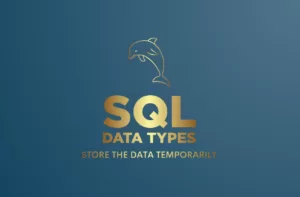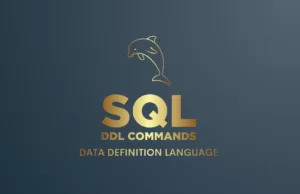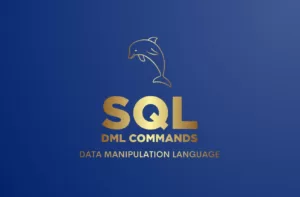Read this article to understand the SQL Date and TIME related functions like DATE, TIME, CURDATE, CURTIME, NOW along with the examples. We have shared few examples and we have shared basic as well as advance level common interview questions also.
In this post, I will explore the functions of handling SQL DATE, TIME, DATETIME, TIMESTAMP, YEAR in SQL. We will learn how to effectively use DATE and it’s related functions, manipulate and extract information from them, and understand the nuances of date and time calculations in SQL queries.
First, let’s talk about the theory of SQL DATE/TIMESTAMP and how we should use it. Below are the few data types which we can use to store the date or time related values. Learn all date related data types in detail in this post.
- DATE
- TIME
- DATETIME
- TIMESTAMP
- YEAR
All above data types are supported by almost all SQL engines. Let’s see the different functions per data type and syntax of each functions one by one.
DATE
The
DATE
data type is used to store date values in the format ‘YYYY-MM-DD’. It represents a date without any time component.
Below are the functions which we can use to perform operation on DATE values.
- CURDATE
- NOW
- DATE
- DATE_ADD
- DATE_SUB
- YEAR
- MONTH
- DAYOFWEEK
- DAYOFMONTH
- DAYNAME
- MONTHNAME
- DATEDIFF
- DATE_FORMAT
CURDATE
Returns the current date in ‘YYYY-MM-DD’ format.
SELECT CURDATE();NOW
Returns the current date and time in ‘YYYY-MM-DD HH:MM:SS’ format.
SELECT NOW();DATE
Extracts the date part from a datetime expression.
SET @dt = now();
SELECT date(@dt);DATE_ADD
Adds a specified interval to a date or datetime value.
SET @dt = now();
SELECT date_add(date(@dt),interval 3 day);above syntax will add the 3 day interval and return the date in YYYY-MM-DD format.
DATE_SUB
Subtracts a specified interval from a date or datetime value.
SET @dt = now();
SELECT date_sub(date(@dt),interval 3 day);above syntax will subtracts the 3 day interval and return the date in YYYY-MM-DD format.
YEAR
Returns the year as a four-digit number.
SELECT YEAR(date(now()));MONTH
Returns the month as an integer (1 to 12).
SELECT MONTH(date(now()));DAYOFWEEK
Returns the day of the week as an integer (1 = Sunday, 2 = Monday, …, 7 = Saturday).
SELECT DAYOFWEEK(date(now()));DAYOFMONTH
Returns the day of the month as an integer (1 to 31).
SELECT DAYOFMONTH(date(now()));DAYNAME
Returns the name of the day of the week (e.g., Sunday, Monday).
SELECT DAYNAME(date(now()));MONTHNAME
Returns the name of the month (e.g., January, February).
SELECT MONTHNAME(date(now()));DATEDIFF
Returns the difference in days between two dates.
SELECT datediff(date(now()),date(date_add(now(),interval 3 day)));DATE_FORMAT
Formats a date or datetime value as per the specified format string.
Syntax
DATE_FORMAT(date_value, format_string)Here’s a breakdown of the format specifiers you can use in the
format_string
:
-
%Y: Year as a four-digit number (e.g., 2023). -
%y: Year as a two-digit number (e.g., 23). -
%m: Month as a two-digit number (01 to 12). -
%c: Month as a one-digit number (1 to 12). -
%b: Abbreviated month name (e.g., Jan, Feb). -
%M: Full month name (e.g., January, February). -
%d: Day of the month as a two-digit number (01 to 31). -
%e: Day of the month as a one-digit number (1 to 31). -
%a: Abbreviated weekday name (e.g., Sun, Mon). -
%W: Full weekday name (e.g., Sunday, Monday). -
%H: Hour (00 to 23). -
%h: Hour (01 to 12). -
%i: Minutes (00 to 59). -
%s: Seconds (00 to 59). -
%p: AM or PM (works with%h:%i:%s %p).
Example
SELECT DATE_FORMAT(now(), '%Y-%m-%d %H:%i %p');TIME
The
TIME
data type is used to store time values in the format ‘HH:MM:SS’. It represents a time of day without any date component.
Below are the functions which we can use to perform operation on DATE values.
- CURTIME
- TIME
- HOUR
- MINUTE
- SECOND
CURTIME
Returns the current time as a
TIME
value.
SELECT CURTIME();TIME
Extracts the time part from a
DATETIME
or
TIMESTAMP
value.
SET @dt = now();
SELECT time(@dt);HOUR
Returns the hours from a
DATETIME
or
TIME
value (0 to 23).
SET @dt = now();
SELECT hour(@dt);MINUTE
Returns the minutes from a
DATETIME
or
TIME
value (0 to 59).
SET @dt = now();
SELECT minute(@dt);SECOND
Returns the seconds from a
DATETIME
or
TIME
value (0 to 59).
SET @dt = now();
SELECT second(@dt);DATETIME
The
DATETIME
data type is used to store date and time values in the format ‘YYYY-MM-DD HH:MM:SS’. It represents a specific point in time.
DATETIME
data type is a combination of DATE and TIME data type.
Below are the functions which we can use to perform operation on DATETIME values.
- FROM_UNIXTIME
- UNIX_TIMESTAMP
- UTC_TIMESTAMP
- CONVERT_TZ
- STR_TO_DATE
FROM_UNIXTIME
Converts a Unix timestamp to a
DATETIME
value.
SELECT FROM_UNIXTIME(1689791732);UNIX_TIMESTAMP
Returns the Unix timestamp for a given date or datetime value.
SELECT UNIX_TIMESTAMP(now());UTC_TIMESTAMP
Returns the current UTC date and time as a
DATETIME
value.
SELECT UTC_TIMESTAMP();CONVERT_TZ
Converts a datetime value from one time zone to another.
Syntax
CONVERT_TZ(dt, from_tz, to_tz)STR_TO_DATE
Converts a string to a
DATETIME
value using the specified format.
Syntax
STR_TO_DATE(str, format)Example
SELECT STR_TO_DATE('2023-07-20', '%Y-%m-%d')Output
2023-07-20TIMESTAMP
The
TIMESTAMP
data type is used to store date and time values in the format ‘YYYY-MM-DD HH:MM:SS’. It represents a specific point in time.
data type is a combination of DATE and TIME data type.
TIMESTAMP
TIMESTAMP
has a narrower range, from ‘1970-01-01 00:00:01’ to ‘2038-01-19 03:14:07’.
All functions which are supported by DATETIME are supported by TIMESTAMP.
YEAR
The
YEAR
data type is used to store a year value in a 2-digit or 4-digit format (‘YY’ or ‘YYYY’). It is often used to represent years in a compact form.
Below are the functions which we can use for getting YEAR values.
- EXTRACT
EXTRACT
The
EXTRACT()
function in MySQL is used to extract a specific part (or component) of a date or datetime value, such as year, month, day, hour, minute, or second. It allows you to retrieve individual components of a date or datetime value, enabling you to perform various date-related operations and analyses.
Syntax
EXTRACT(unit FROM date_value)-
unit: Specifies the date or time part to be extracted. It can be one of the following values:YEAR,MONTH,DAY,HOUR,MINUTE, orSECOND. -
date_value: The date or datetime value from which the specified part is to be extracted.
Example
SELECT
event_name,
event_datetime,
EXTRACT(YEAR FROM event_datetime) AS event_year,
EXTRACT(MONTH FROM event_datetime) AS event_month,
EXTRACT(DAY FROM event_datetime) AS event_day
FROM events;Linking
We have seen all the required date related functions. Learn all the date related data types here. There are a lots of functions we can use for manipulating the date data types. You can refer all the interview questions and quiz. Please refer all the links for understanding the DATE functions in depth.
Interview Questions
Basic DATE/TIME SQL Interview questions
- What is the purpose of date functions in MySQL, and why are they important?
- How would you retrieve the current date and time using a date function?
- Explain the difference between the
DATE()andTIME()functions in MySQL. - How do you extract the year, month, and day from a
DATETIMEcolumn using date functions? - Suppose you have a table with a
DATEcolumn representing customers’ birthdates. How would you find all customers who were born in a specific month and year? - How can you calculate the age of a person based on their birthdate using date functions?
- Suppose you have a
DATETIMEcolumn recording user activities. How would you find the most recent activity in the table? - What is the purpose of the
DATE_FORMAT()function in MySQL? Provide an example of how to use it. - How would you add a specific number of days to a date using a date function?
- Explain the purpose of the
UNIX_TIMESTAMP()function and when it is useful.
Intermediate DATE/TIME SQL Interview questions
- Suppose you have a table containing event data with a
DATETIMEcolumn representing event start times. How would you find the time slot with the highest number of overlapping events? - Describe how you would handle date and time data when dealing with data from different time zones in a distributed system using MySQL.
- You have a table storing customer subscription data with a
DATETIMEcolumn representing subscription start times. How would you find the number of active subscriptions for each day in the last month?
Advanced DATE/TIME SQL Interview questions
- You have a table with a
DATETIMEcolumn storing timestamps of user activities. How would you find the total number of activities performed by each user for each day of the week?
Happy offline learning… Lets meet in next session.







